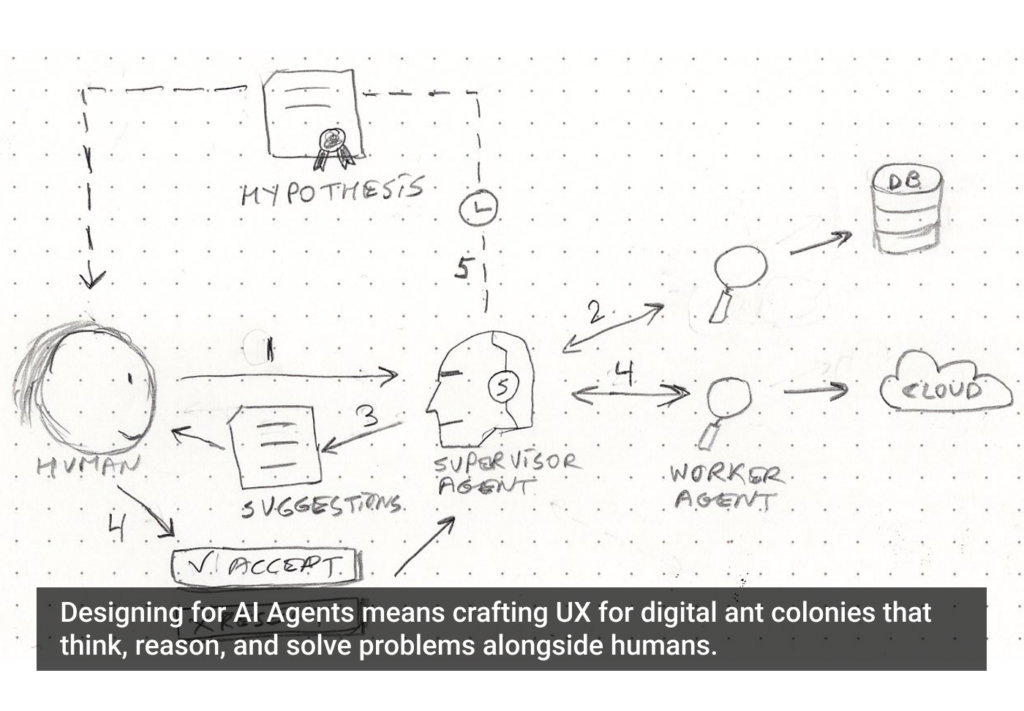If I needed to summarize this article in one sentence, I’d say: “Shut up, listen, and then start talking.”
User experience practitioners who are also excellent interviewers know that listening is a key aspect of a successful interview. By keeping your mouth shut you reduce the risk of verbal foibles and are in a better position to absorb information. When you are concentrated in absorbing information, you can then begin to identify research opportunities and effectively sow seeds for future research.
If I needed to summarize this article in one sentence, I’d say: “Shut up, listen, and then start talking.”
User experience practitioners who are also excellent interviewers know that listening is a key aspect of a successful interview. By keeping your mouth shut you reduce the risk of verbal foibles and are in a better position to absorb information. When you are concentrated in absorbing information, you can then begin to identify research opportunities and effectively sow seeds for future research.
When you discuss future UX research with your stakeholders you want to collect pure, unbiased data and turn it into useful information that will help you pitch and get buy-in for future research activities. As in end-user interviews, stakeholder interviews a word, a gesture, or even a blink or a certain body posture can bias an interviewee and add flaws to data you collect. Let’s discuss several aspects of listening to your stakeholders when you talk with them about UX research. You will quickly see how these are similar to techniques you apply when interviewing users.
Stakeholders are our clients, whether internal or external to our organization. These are people who need to believe in what we do so they will act on research results and fund future research. We all have a stake in product development. They have a stake in UX research.
Take Notes
As you are listening to what stakeholders say, take accurate notes. You will find these notes extremely useful when you move on to creating a research plan, especially as you phrase research questions and participant characteristics. Taking notes also shows your stakeholders that you care about what they think and want. It’s all about respect.
I once had a study participant who noticed that I stopped typing on my laptop keyboard and immediately responded, “That’s it? I’m not saying anything important any longer?” Your stakeholders are no different.
Do Not Interrupt
Interrupting stakeholders as they answer your questions and express their thoughts shows disrespect. When you truly listen to a person you are conversing with, you have no reason to interrupt them. Some people, when interrupted, tend to lose their line of thought, so you might also be losing out on important information.
Encourage a Conversation
When there are several stakeholders present, it’s a golden opportunity for co-discovery. When you ask a question, try facilitating a conversation between stakeholders. It will help you understand the many aspects and layers behind answers. It might also uncover hidden political forces and tensions you were not aware of that might affect the future of the study and its impact.
Ask Open-Ended Questions
When you ask your product manager, “Do you want me to invite 30- to 40-year-old women for this study?” you’ve invited them to say, “yes” or “no.” What you really want to know is why. Instead, try this open-ended phrasing: “Tell me about the participants you want to see in this study.”
Look for Body Language Signals
By studying the body language signals your stakeholders give you, you can intuit all sorts of key insight. Do the truly want the study they are asking for? Were they forced to ask for it? Are they are interested in the results? What do they think of you and your ability to help them?
Speaking very generally, if you see your stakeholders sitting back, crossing their arms and legs, and not looking you in the eye, you have a challenge ahead of you. If they sit up straight, maybe at the edge of their chair, lean forward, and wave their hands when they talk, you can tell that they are engaged, excited, and eager to partner with you—and open to learning from users.
Don’t Ask Leading Questions
You want to ask the most neutral questions and avoid biasing your stakeholders. When you ask non-leading questions, your stakeholders talk more, give you more helpful information, and allow you to listen well. For example, here is a leading question you should avoid asking: “You are interested in a standard usability test, right?” A better way to ask it would be, “Tell me about the type of research you want to do.”
Don’t Think Too Much
You are in information-gathering mode. Think army intelligence. You don’t plan your moves now. You don’t think about the data in front of you. All you do now is collect and gather. Later on, you’ll think about it. If you think too much, you don’t listen.
Sowing Seeds for Future Research
In order for you to truly affect people, teams, organizations, and products with user experience research, you do need to talk, but it’s about quality, not quantity. When you hear a version of the same thing repeated in three different meetings by several stakeholders, use it. The next time you meet one of these stakeholders—or, even better, his or her manager—mention it to them. Say something like, “I’ve been hearing that information about _____ has become a knowledge gap in our team. What do you think? Do you think it can be filled in with input from user research?”
Another way to sow seeds is through repetition. It works for politicians—who believe that if their message is repeated countless times, potential voters will eventually think it’s true—and children, who also need to experience something again and again to become satisfied. Think Bob the Builder, Dora the Explorer, and Yo Gabba Gabba!.
Repeat Your Message Like a Broken Record
When you hear your stakeholders repeat ideas and phrases you’ve plugging away at, it’s a sign that you planted the right seeds. Let’s say you’ve identified an opportunity for making an impact with user experience research. Create some kind of a mantra—a phrase that you keep using each time something relevant is being said in a meeting or conversation.
Say, for instance, you’ve determined that the team doesn’t know anything about what users do with information they export. Do they import it into Microsoft Excel? Do they print it and hang it on the wall? Why do they export information in the first place? You listened well and kept hearing stakeholders and their managers refer to this knowledge gap. The mantra you might respond with would be: “Watching a few users export data is easy; we could do it next week.” Repeat it at every (relevant) opportunity. Eventually, it will sink in. When you hear the product manager saying that watching users export data is easy and can be done next week, it’s a sign that you’ve done well.
Final Words
I’d like to finish with two quotes about listening that I really like.
“The most basic of all human needs is the need to understand and be understood. The best way to understand people is to listen to them.”—Dr. Ralph Nichols
“Be a good listener. Your ears will never get you in trouble.”—Frank Tyger
If you listen well to your end-users during UX research, I’m confident you are already great at listening to your stakeholders. Use these skills to get buy-in to do more UX research and to come up with research results your stakeholders want to act on.
Images of attentive panther, folded arms, and record on turntable courtesy Shutterstock.









